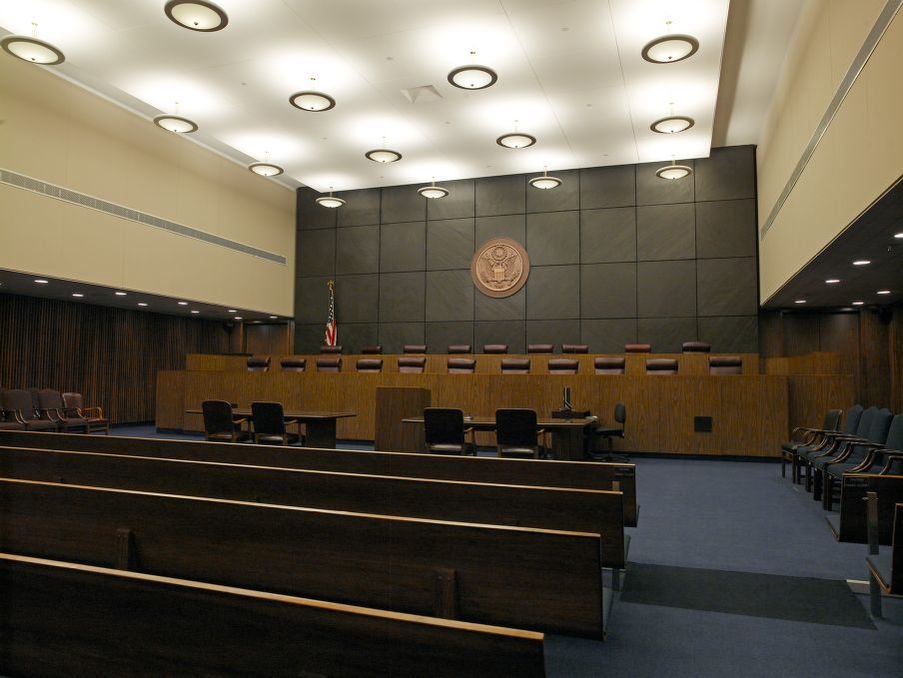When Emma Semler, a woman in her 20s who shared drugs with a friend who tragically died, was sentenced in 2019 to 21 years in federal prison for “drug delivery resulting in death,” then-Philadelphia First Assistant US Attorney Jennifer Arbittier Williams gloated in the Philadelphia Inquirer.
Arbittier Williams told readers to not feel sorry for Semler, because “She had a long history of buying drugs and supplying them to other people.” She cynically implied that people only had sympathy because Semler was a young woman, stating “She may not be a physically intimidating figure who sold drugs on an urban street corner, but she was a drug distributor nonetheless.”
Despite the prosecutor’s acknowledgement that there is “no simple solution to the horrific opioid crisis that surrounds us” and that “It requires a persistent, multifaceted approach,” her piece is a perfect example of how the Justice Department breeds myopic, militaristic views about drugs and the people who use them.
The US Court of Appeals for the Third Circuit—the same court that shut down efforts to open an overdose prevention site in Philadelphia—luckily and surprisingly had a little more understanding.
To its judges, according to their June 1 ruling, Semler is not a murderer. She was not even a “drug dealer.” She shared drugs with her friend, Jenny Werstler, as people who use drugs often do. Together, they injected heroin from Philly’s adulterated supply in a KFC bathroom one day in 2014. Werstler tragically overdosed. Semler ran away without calling 911, probably because she feared something like this would happen. Semler’s conviction has now been overturned, although she does face a new trial.
That interpretation, the court acknowledged, would turn “virtually all plain possession that takes place in a social setting into ‘distribution.’”
The majority opinion boils down to statutory interpretation of what it means to “transfer” or “distribute drugs.” The US Attorney’s office wanted as broad a definition as possible, which the court deemed “hyperliteral” and contrary to the will of Congress.
The court instead acknowledged that Congress prescribed different punishments for drug possession versus trafficking for a reason. So-called trafficking, per the opinion, is worse because it “tends to have the dangerous, unwanted effect of drawing additional participants into the web of drug abuse.” Werstler, like Semler, was a person with substance use disorder—the pair had met in rehab in 2013—not an experimenter. Both women had experience of drug use and consented to use together.
Seeing the situation otherwise, the court acknowledged, would turn “virtually all plain possession that takes place in a social setting into ‘distribution.’” The court expressed concern that this painfully stretched definition would extend all the way to two people passing a meth pipe back-and-forth.
The Third Circuit ruling is non-precedential, meaning that it does not bind the same court in the future and has limited persuasive value, at least legally speaking. Nonetheless, the decision could be helpful in the wider fight against drug-induced homicide prosecutions. According to the Health in Justice Action Lab at Northeastern University School of Law, more than half of all these prosecutions are against friends or loved ones of the deceased who shared drugs with them.
The majority decision was penned by Senior Circuit Judge Jane Richards Roth, a President George H.W. Bush appointee, which signifies that such views are being formed by judges on both sides of the aisle. The Supreme Court’s 2014 decision in Burrage v. United States has already made it harder to get convictions in these cases, signifying a potential sea change in how they are being seen by courts.
Prosecutors who support expansive definitions of “distribution” ostensibly do so out of concern for people who use drugs. Yet they either know nothing about what drug use actually looks like, or in fact disdain people who use drugs as a social scourge.
“Tough-on-crime” prosecutors have a tendency to side with victims of crime when it serves their purpose of exacting maximum punishment. If such prosecutors were honest that they saw both people in a situation like that of Semler and Werstler as immoral criminals—rather than two people with a perpetrator-victim dynamic—family members of people who die would almost certainly refuse to bolster the prosecutors’ drug-induced homicide cases. Thus, it is in the best interest of someone like Arbittier Williams to feign sympathy for the person who died.
Academic studies show how prosecutors are apparently willing to admit such motives when their names are anonymized. A 2018 George Washington Law Review article by Professors Ronald Wright and Kay Levine includes many quotes they received from these sorts of prosecutors.
One prosecutor told them, “if you would have looked at who I was as a 12-year-old, it was like a 12-year-old prosecutor, honestly.” Another said: “Frankly, I was probably always quick to judge, even when I was a teenager, you know?” Yet another blamed the German stoicism of her family line. And another rationalized her work by saying God made natural law, thus “prosecutors are doing God’s work by enforcing the law.” (Someone clearly missed the fact that legislators mostly claim no special linkage to the divine, and how the number of criminal laws in our nation has exponentially increased in the last 50 years.)
Just as the absolutist thinking behind prohibition and inequality has driven overdose deaths to record highs, the draconian pursuit of drug-induced homicide convictions has repeatedly, by sentencing people to decades in prison, turned one tragedy into two.
Photograph of Third Circuit Court of Appeals by Carol M. Highsmith via Library of Congress





Show Comments